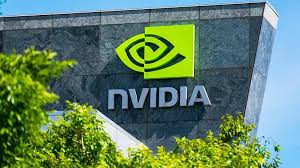For the longest time, my view on Nvidia was unequivocal, and frankly, deeply skeptical. I wasn't quiet about it either, often voicing my concerns to colleagues and in my own analyses. I saw a company teetering on an impossibly high valuation, a darling of the stock market, yes, but one whose foundations seemed constantly rocked by the tremors of geopolitical strife. Every headline about U.S. export restrictions on advanced AI chips to China, forcing Nvidia to create modified, potentially hobbled, variants like the rumored RTX 5090DD, felt like another crack in the facade. The ongoing Malaysian investigation into alleged illicit use of Nvidia hardware by Chinese firms only deepened my conviction that Nvidia was caught in an unwinnable game of cat-and-mouse, its growth prospects perpetually capped by Washington's policies.
I’d read the reports, including those where Nvidia's own CEO cautioned that U.S. sanctions might not halt China's AI momentum, and to me, this spelled trouble. It underscored the fierce, ever-growing competition, particularly from China's rapidly advancing domestic capabilities. How could one company, I reasoned, truly maintain its lead against such determined, state-backed adversaries? Articles positioning other chipmakers like AMD as a 'smarter bet' resonated with my thinking; it felt like the market was too concentrated, too reliant on a single name. And when I saw stories framing other entities as the 'real winners' in major AI deals – a data center stock here, a software company there – it only reinforced my belief that Nvidia's indispensability was, perhaps, more hype than reality. That staggering, near-$5 trillion valuation? In my mind, it was a monument to market exuberance, vulnerable to the slightest geopolitical shift or competitive breakthrough.
My perspective began to shift not in a boardroom or from a press release, but during a surprisingly candid, off-the-record conversation. It was late, at an industry conference, with a mid-level Nvidia engineer – someone far from the polished sheen of corporate communications. We weren't talking stock prices or sanctions initially. We were talking about the sheer, unadulterated challenge of computational problems, the kind that keep scientists and researchers up at night. What struck me wasn't just their passion, but their almost philosophical explanation of Nvidia's long-game approach to R&D, an approach that seemed to treat immense challenges not as obstacles, but as gravitational centers around which innovation coalesced. This wasn't the narrative I was used to. It was the first crack in my certainty, prompting a cognitive dissonance I couldn't ignore. This conversation was the catalyst that forced me to revisit my deeply entrenched beliefs with a fresh, and admittedly uncomfortable, openness.
One of the pillars of my skepticism, as I mentioned, was the constant barrage of news surrounding U.S. export controls and the ensuing geopolitical risks. I saw Nvidia as perpetually on the back foot, its strategy dictated by external pressures, its market access fragile. The idea of them creating 'special' chips for China, like the rumored RTX 5090DD, or the complexities highlighted by the Malaysian probe, seemed like clear evidence of a company whose wings were being clipped, its incredible valuation hanging by a thread. But as I started to look past the headlines, spurred by that engineer's perspective, I began to see a different pattern. The relentless pace of their core technological innovation – the whispers of HBM4 for the upcoming Rubin GPUs, the practical magic of G-Assist for gamers, the subtle genius of Neural Texture Compression, the consistent leaps with DLSS 4 – these weren't the actions of a company merely reacting. This was proactive, aggressive innovation on a scale that was, frankly, breathtaking. And then there were the less sensational, but profoundly strategic, investments, like their exploration of SMR nuclear power. This wasn't a company just trying to sell chips next quarter; this was a company thinking about the fundamental energy requirements of computation a decade, or more, from now. Their ecosystem development, forging partnerships with entities like SandboxAQ in quantum computing or Hexagon's AEON for industrial digitalization, and NationGate for supply chain resilience, painted a picture of a far more intricate and robust strategy. It was a difficult realization. What I had perceived as reactive scrambling in the face of sanctions was, from another angle, a testament to incredible adaptability and a refusal to cede ground, all while the core innovation engine for unrestricted markets was firing on all cylinders. The valuation began to feel less like a speculative bubble and more like a recognition of this deep-seated resilience and relentless forward thrust.
Then there was the competition, particularly from China. Nvidia's CEO acknowledging China's AI momentum only confirmed my fears: how could they possibly stay ahead? My mind would often drift to the idea that, surely, a competitor like AMD, or a new dark horse, would soon emerge to shatter Nvidia's dominance. It seemed almost inevitable. But my pivotal conversation, and the subsequent deep dive it prompted into Nvidia's software ecosystem, unveiled a truth I had grossly underestimated: CUDA. For years, I had focused on the hardware, the speeds and feeds. I hadn’t fully appreciated the colossal, almost unbreachable moat that is CUDA. It’s not just a software development kit; it's decades of relentless engineering, a global community of millions of developers, a vast library of optimized applications across countless domains – from scientific research and healthcare to finance and, of course, AI and gaming. This ecosystem creates an immense gravitational pull. Yes, competitors can design fast chips, and China's progress is undeniable. But replicating that deeply entrenched software environment, that global developer buy-in, is a Herculean task. Nvidia's leadership in AI, gaming, and robotics isn't just about having the fastest silicon; it's about providing the most comprehensive, mature, and widely adopted platform. It was a humbling realization. My focus on the 'threat' had blinded me to the sheer, established power of their existing ecosystem. Nvidia wasn't just running fast; they were running on a well-paved highway they had largely built themselves.
Finally, I had to confront my tendency to see 'narrative dilution' – those instances where other companies were framed as the 'real winners' or primary beneficiaries of AI's rise. If a data center stock soared on a Google/OpenAI deal, my inner skeptic would whisper, 'See? Nvidia isn't the whole story.' Articles suggesting AMD might be a smarter investment played into this. It felt like Nvidia's role, while crucial, was perhaps being overstated. But as I connected the dots from their technological innovations to their strategic ecosystem development (like the NationGate collaboration to strengthen supply chains) and their consistently strong financial forecasts, a different understanding emerged. Nvidia isn't just a component; they are often the enabling foundation. Those data centers are filled with Nvidia GPUs. The AI breakthroughs are predominantly trained and run on Nvidia hardware and software. Other companies shining doesn't dilute Nvidia's importance; it often validates it. Their technology is so fundamental that its success inherently creates opportunities and victories for a vast ecosystem of partners and customers. It’s not dilution; it’s an amplification effect. What I had perceived as a zero-sum game, where another's gain was Nvidia's diminished spotlight, was often a positive-sum expansion of the entire technological frontier, with Nvidia providing the core impetus. This understanding didn't come easily. It required me to dismantle my previous framework and see the interconnectedness, rather than just the competition.
My journey from being a staunch Nvidia skeptic to someone who now sees a much more nuanced, resilient, and strategically profound company has been, to put it mildly, an exercise in humility. The challenges Nvidia faces – the export controls, the geopolitical complexities, the ever-present competition – are undeniably real and significant. I don’t claim to have all the answers, nor do I believe Nvidia is without hurdles. But I was wrong to let those challenges completely overshadow the incredible depth of their innovation, the strength of their ecosystem, and the long-term vision that appears to guide their path. My perspective shifted because I was willing to look beyond the immediate headlines and confront my own biases. Perhaps, if you share some of my old skepticism, it might be worth taking a similar, deeper look. You might be surprised by what you find.



